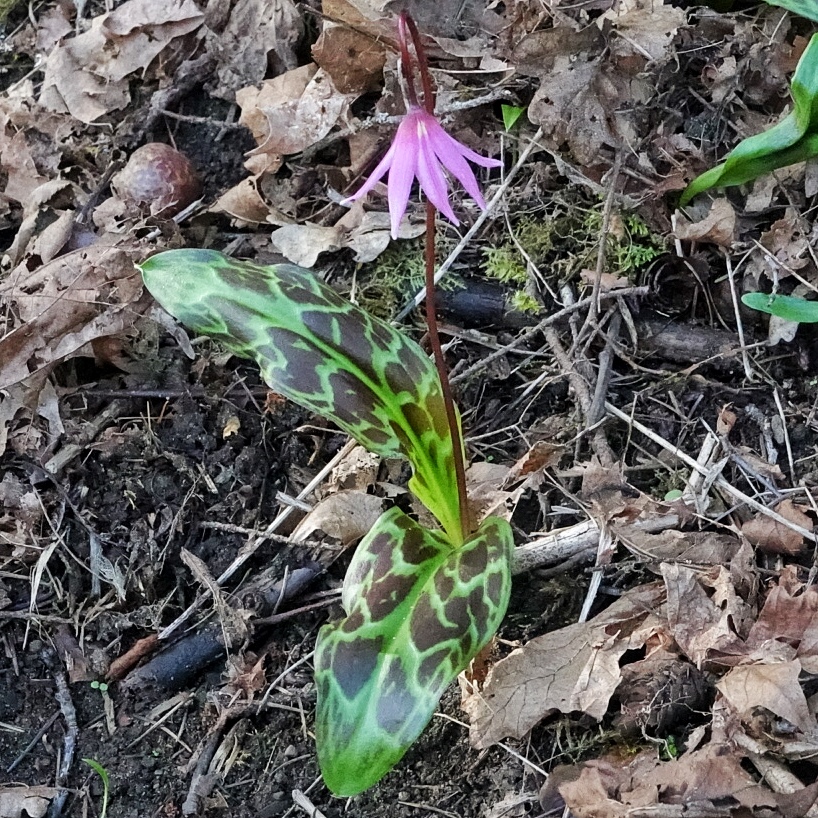
Every year I really look forward to a late March stroll on the Burnt Bridge Creek Trail in Vancouver, Washington, because that is usually the first place each spring that I find Erythronium revolutum. These spectacular wildflowers go by many common names, such as mahogany fawn lily, and coast fawn lily, but I’ve always preferred the simplicity of pink fawn lily.
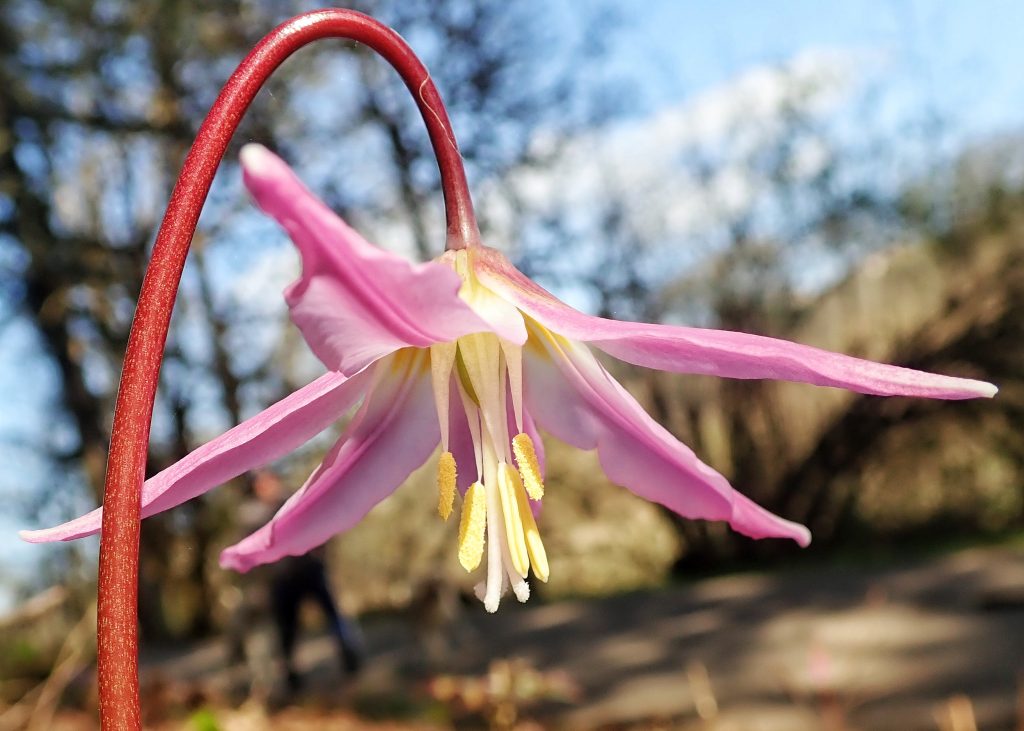
This is one of the first flowers to appear on that trail, with the beautiful marbled leaves coming on right after the osoberry and western trillium, and before most other ground plants have begun to leaf out, so that they really stand out against a backdrop of leaf litter. And then 10 days or so later their spectacular flowers open up, delicate pastel splashes of bright color amidst all of those drab earth tone. It is an immensely cheering sight!
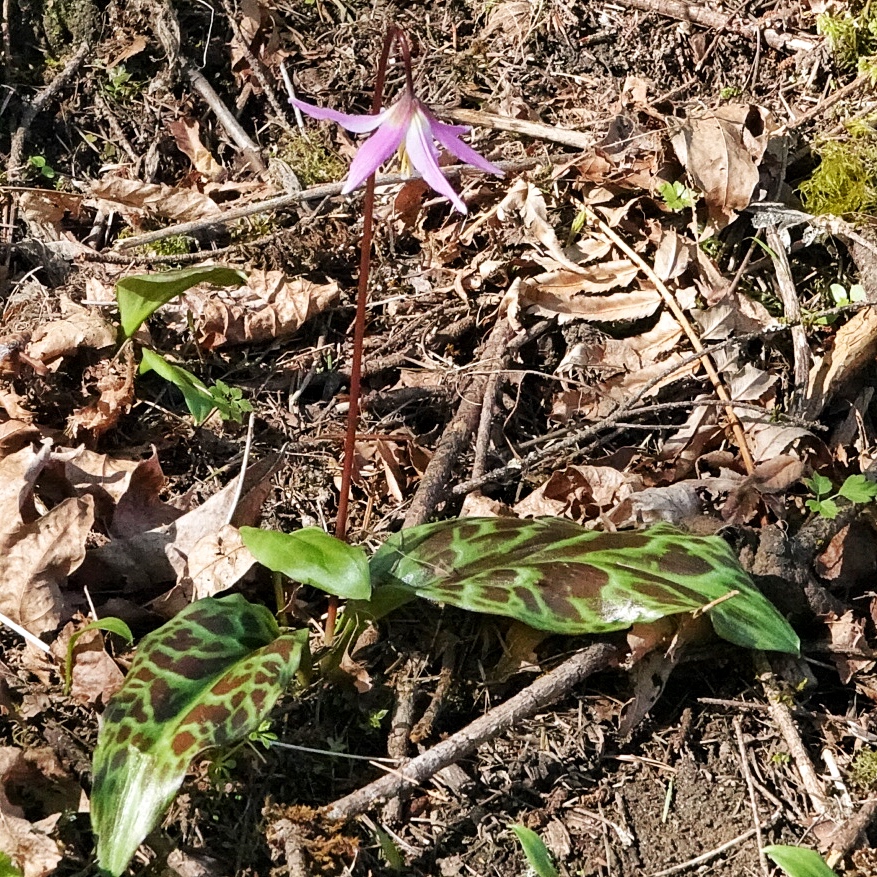
Because they are known as a coastal species I used to wonder if this patch, in deep shade in a wet forest, could be Henderson’s fawn lily, but one look at the wide, flattened stamens (once I knew what to look for) disabused me of that notion. I also briefly considered that they might be a pink morph of Oregon fawn lily (which also has wide filaments), but that species prefers drier ground and more sunshine, and, while I’ve seen a couple of photos of ones that were pink tinged, none of them approached the depth of color of these specimens. I did notice that Flora of Oregon shows pink fawn lilies in Columbia County, which is just across the Columbia River from this location, and states that they can be found up to 50 km inland, although this patch is more like 60 miles from the coast. And Washington Native Plant Society just says west of the Cascades, probably because Washington State DNR says they may be found up to 100 km inland. So I now feel confident of my identification. Edited to amend- I have been informed by Paul Slichter that the local rare plant society considers this patch to be naturalized escapees from an historic garden which was located at the top of the slope.
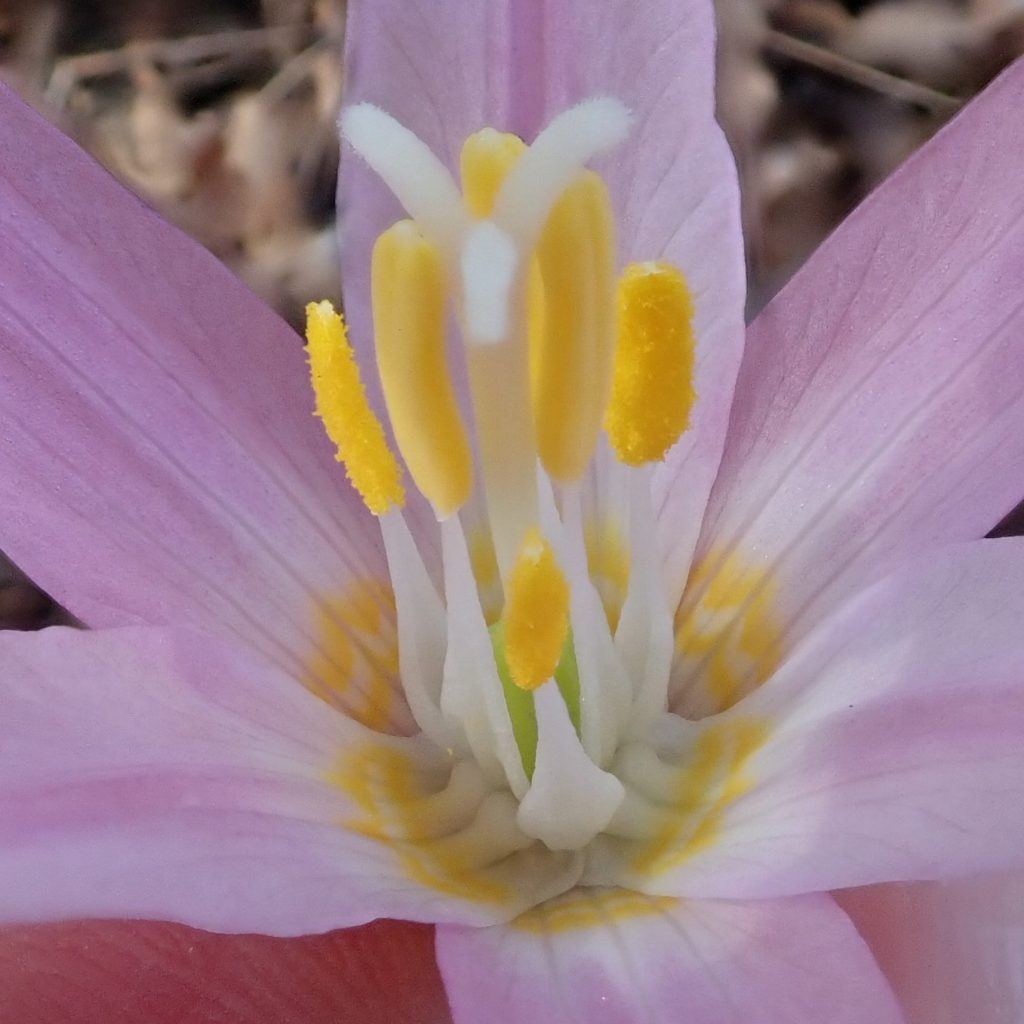
Indigenous people around Vancouver Island, BC, ate the bulbs (corms), which were dug with yew spades when the leaves began to emerge. Sometimes they were stored in cool places and were eaten raw on hot days. They were also steamed in cedar boxes for feasts, and were served with the rendered fat of the oolichan (eulachon or smelt). One had to always drink water after consuming the corms or it was said they would make one sick.
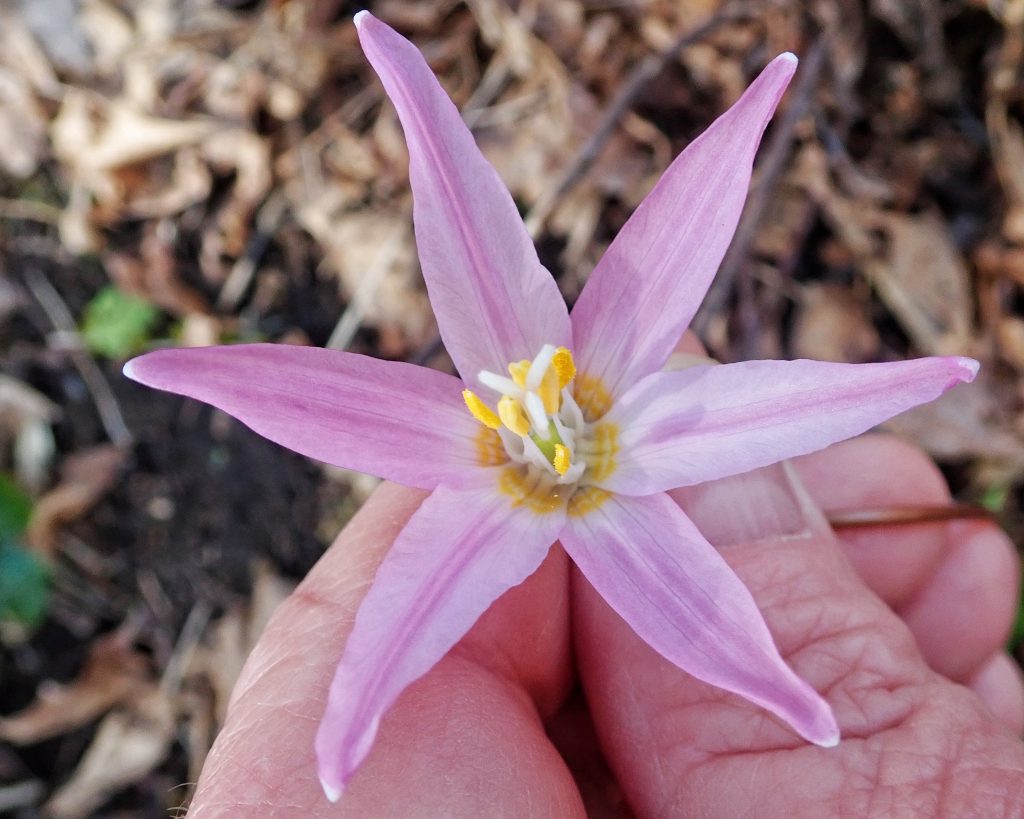
Description– Low growing (6-12” tall) plant with nodding flowers and no stem leaves; the 2 basal leaves are large (4-10” long), lanceolate to ovate, distinctly marbled in green, brown, and sometimes white; tepals (petals and sepals, which are indistinguishable in this species) narrow, pink to purple with yellow at their base, recurved at maturity to expose the stamens; filaments (the stalk of the stamen) wide (1.5-3mm) at the base and flattened, narrowing drastically to the yellow anthers.
Similar species– E. hendersonii has narrow, linear filaments; E. elegans and E. quinaultense have wider tepals that are usually pink and white, and narrower filaments; E. oregonum have white to cream or very light pink tepals.
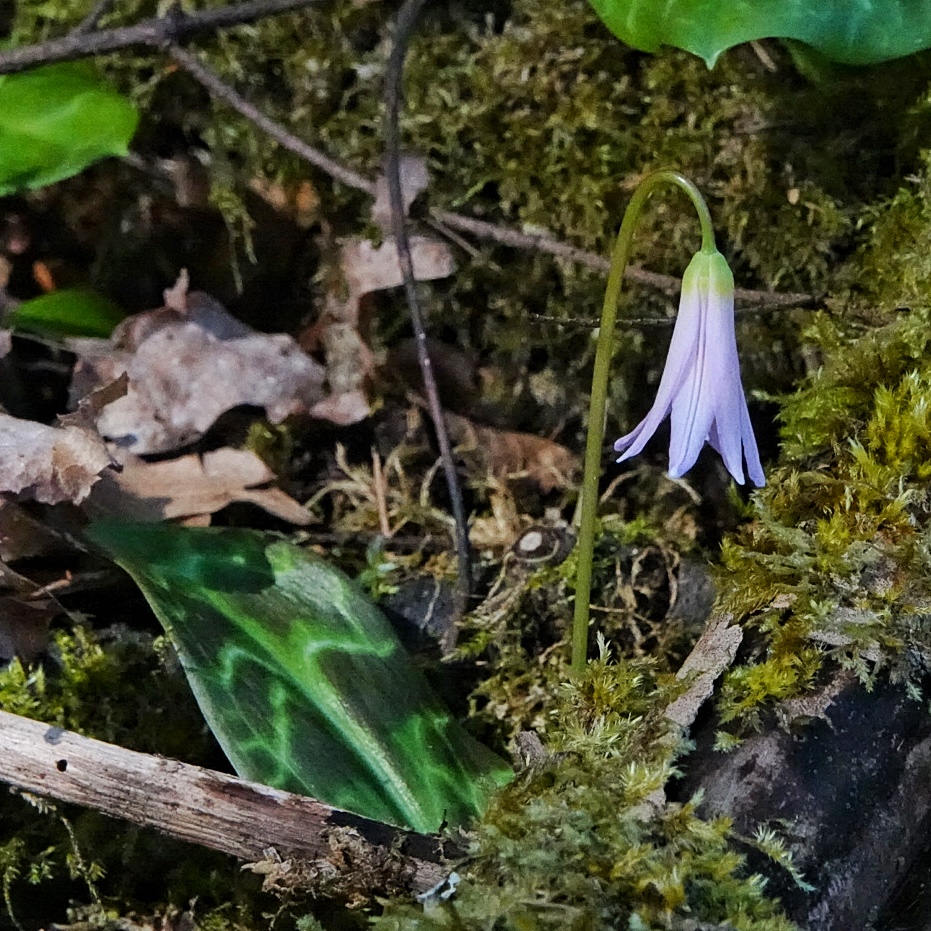
Habitat– Lower elevation forests, as well as riparian corridors and forest openings.
Range– Endemic to our region; from lower elevations west of the Cascades to the Pacific, also in coastal Northern California.
Reproductive timing– Blooms March-April
Eaten by– Avoided by most herbivores because the foliage is somewhat acrid; corms were eaten by some indigenous peoples.
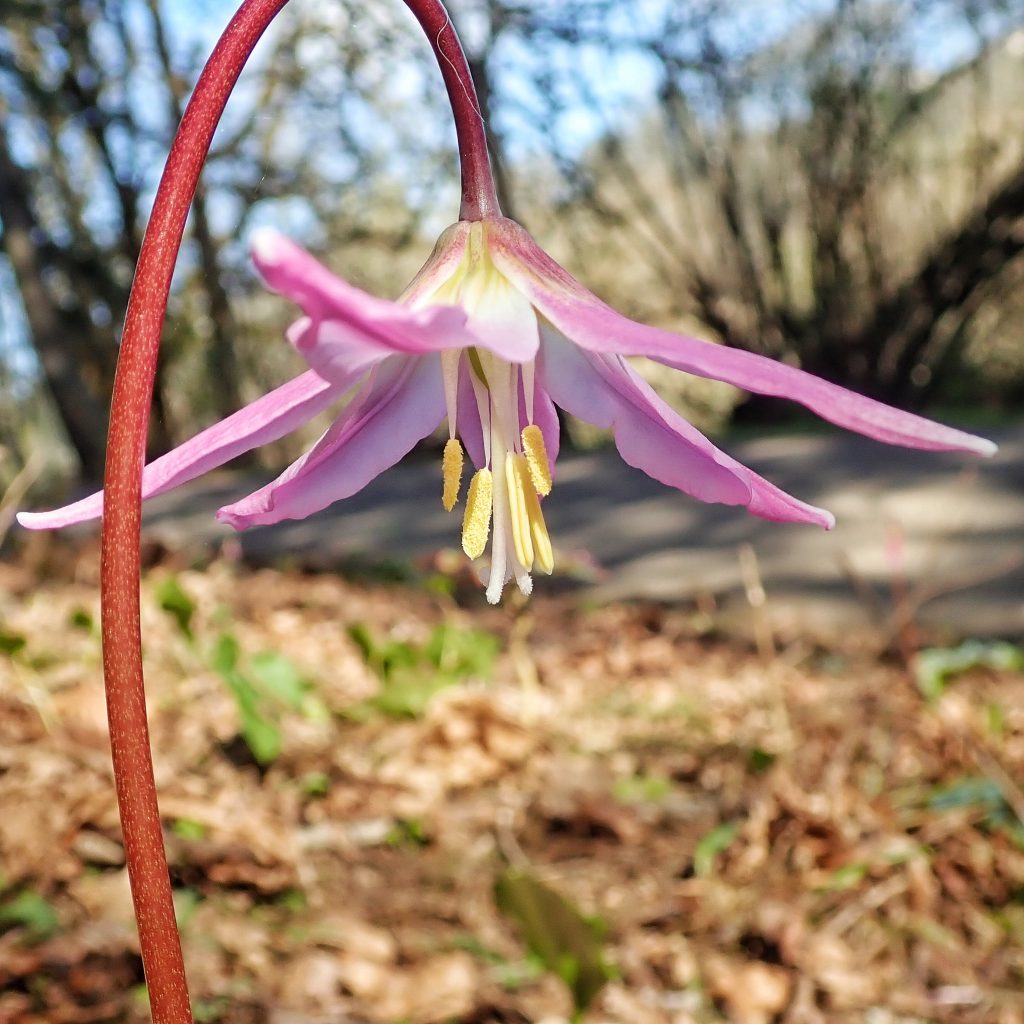
Etymology of names– Erythronium is from the Greek word for red, and refers to the color of the type species of this genus. The specific epithet revolutum is from the Latin for ‘rolled back’, presumably because the tepals are bent upwards and expose the filaments and anthers, although most fawn lilies have a similar flower form. The 19th century naturalist John Burroughs coined the name fawn lily for this group, because he thought the mottled leaves resembled the ears of fawns.
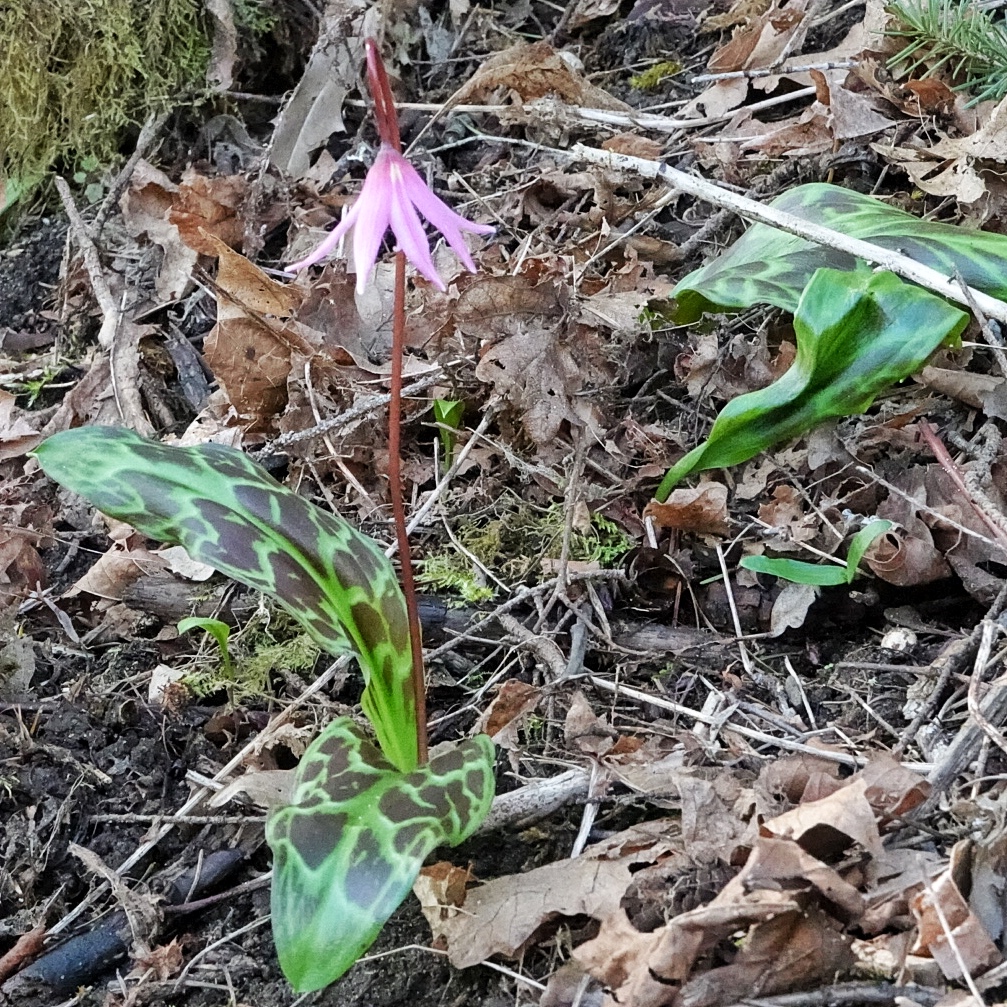
Erythronium revolutum | Pink Fawn Lily | Wildflowers of the Pacific Northwest
https://www.wnps.org/native-plant-directory/121-erythronium-revolutum
https://calscape.org/Erythronium-revolutum-()
https://pfaf.org/user/Plant.aspx?LatinName=Erythronium+revolutum
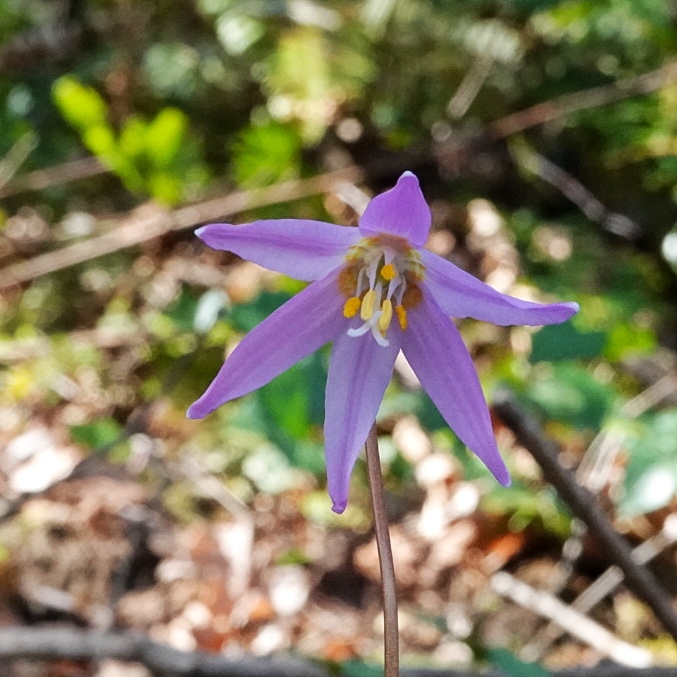
Erythronium revolutum
Ours here in Maine will be yellow- but we will have to wait quite a while for them!
What species do you have, Marnie?
Excellent descriptions
Thank you so much
Thank you!